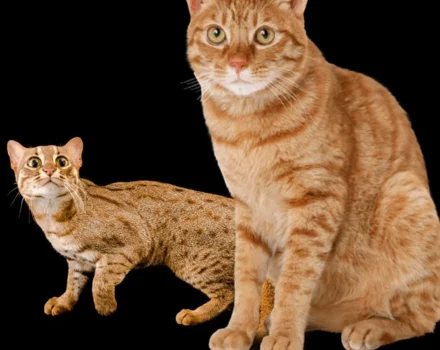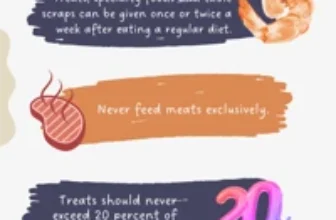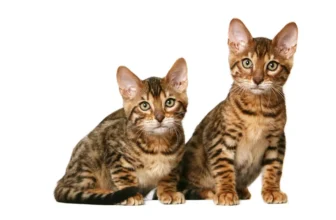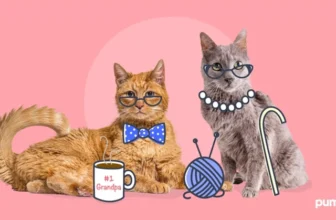As a California Spangled cat owner, you want to ensure that your feline friend has a healthy and balanced diet that meets all their nutritional requirements. But, with so much conflicting information out there, figuring out what to feed them can be overwhelming. That’s why we’re here to help! In this article, we’ll break down everything you need to know about your California Spangled’s nutritional needs based on their age and lifestyle. From the types of food to portion control to possible health problems, we’ve got you covered. So let’s get started and ensure that your California Spangled is getting the nutrition they need to stay happy and healthy.
Nutritional Needs Based on Age
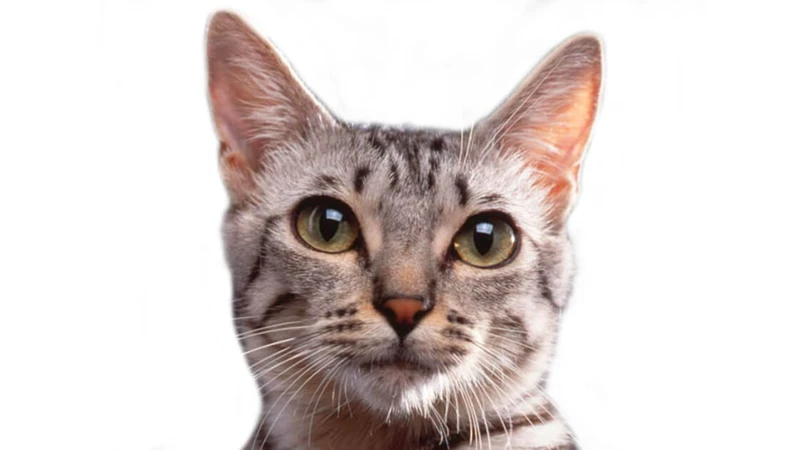
As our California Spangled cats age, their nutritional needs change as well. It’s important to provide them with a balanced diet that meets their specific requirements. Understanding what your cat needs at each stage of life can help ensure they stay healthy and happy. It’s crucial to make sure your cat is receiving all the essential nutrients they require while avoiding any deficiencies that may negatively impact their health. Let’s delve deeper into how to satisfy your cat’s nutritional needs based on age.
Kittens
Kittens have unique nutritional requirements compared to adult and senior cats since they are still growing. During this stage, they need to consume a diet that is high in protein and calories to support their development. Additionally, kittens require a higher amount of certain vitamins and minerals, such as calcium and phosphorus, to help build strong bones.
To ensure that your California Spangled kitten is getting the nutrition they need, it is recommended to provide them with a high-quality commercial kitten food that is specifically formulated to meet their needs. Look for foods that have a high protein content and are labeled as being formulated for kittens. It is also important to check the ingredients list and avoid any foods that contain fillers or artificial preservatives.
When feeding your kitten, it is essential to provide them with the right portion size. Overfeeding can lead to obesity, a common problem among cats. To determine the appropriate amount of food your kitten needs, consider their weight and follow the feeding guidelines on the commercial food package.
Kittens need to stay hydrated, so always have a fresh bowl of water available in their feeding area. You can also provide them with wet food as it contains high moisture content which is beneficial to their health.
Finally, it’s important to supplement your kitten’s diet with vitamins and minerals when necessary. You can consult with a veterinarian to determine if your California Spangled kitten is deficient in any essential nutrients and what supplements to give.
Following these tips and guidelines will help ensure that your California Spangled kitten grows up healthy and strong. For more information about a balanced diet, possible deficiencies, raw food diet versus commercial cat food, homemade cat food pros and cons, vitamins and supplements, and cat food labels for California Spangled cats, check out relevant articles on our website: /balanced-diet-for-california-spangled/, /california-spangled-cats-deficiencies/, /raw-food-diet-vs-commercial-cat-food-ca-spangled/, /homemade-cat-food-pros-cons/, and /california-spangled-cat-vitamins-supplements/, respectively.
Adults
Nutritional Needs for Adult California Spangled Cats
Once your California Spangled cat has reached adulthood, their nutritional needs may change slightly. Here is what you need to know to ensure their diet meets their needs.
| Nutrient | Amount Needed | Food Sources |
|---|---|---|
| Protein | At least 25% | Meat, poultry, fish, eggs, beans, lentils, and peas |
| Fat | At least 10% | Meat, fish, and some plant oils like flaxseed and canola |
| Fiber | 2-4% | Whole grains, vegetables, and fruits like apples and blueberries |
| Water | Plenty of fresh, clean water at all times | – |
As your California Spangled cat gets older, their metabolism may begin to slow down, and they may become less active. This means they may need slightly fewer calories than they did when they were younger. You should consult with your veterinarian to determine your cat’s specific caloric needs based on their age, weight, and activity level.
It’s important to note that some cat foods marketed as “all life stages” may not meet the nutritional needs of adult cats. Look for cat food labeled specifically for adult cats, and make sure it meets the nutrient requirements recommended by the Association of American Feed Control Officials (AAFCO).
To ensure your cat’s diet is balanced and complete, you can also offer a variety of protein sources, such as chicken, beef, fish, and lamb. This will ensure they are getting all the essential amino acids they need. You can also provide a mix of wet and dry food to keep their diet interesting and provide additional hydration.
In addition to a balanced diet, regular veterinary checkups can help ensure your California Spangled cat stays healthy and happy. By providing proper nutrition and care, you can help your cat live a long and fulfilling life.
Seniors
As cats age, their bodies start to change, and their nutritional needs also shift. Older California Spangled cats require a diet that supports their aging bodies. When it comes to seniors, their diet should be rich in protein to help maintain muscle mass, and low in fat to prevent obesity. Feeding them smaller, more frequent meals throughout the day can help promote digestion.
Here are some essential nutritional needs that California Spangled cats require in their senior years:
- Increased Fiber: Older cats have a harder time digesting food, so feeding them food rich in fiber can help prevent constipation and aid digestion. Canned pumpkin and fruits such as blueberries or apples make an excellent fiber source.
- Joint Support: With age, many cats can suffer from conditions such as arthritis. Feeding them food with omega-3 fatty acids, such as fish or flaxseed oil, can help minimize inflamed joints and support healthy mobility.
- Lower Phosphorus: Seniors with kidney problems need to consume low phosphorus diets. High phosphorus diets can lead to kidney damage and exacerbate kidney disease symptoms. Look for food that has a low phosphorus content.
It is important to note that every California Spangled is different and may have individual dietary requirements. Regular check-ups with a veterinarian can help determine any dietary adjustments that need to be made.
Make sure you read the labels: When purchasing food for senior California Spangled cats, check the label for ingredients that promote joint health, low fat content, and moderate protein levels. Also make sure that the first ingredient is a quality protein source. Avoid cat food that contains fillers like grains, preservatives, and artificial colors.
Click here for more information on how to decipher cat food labels for California Spangled cats.
Nutritional Needs Based on Lifestyle
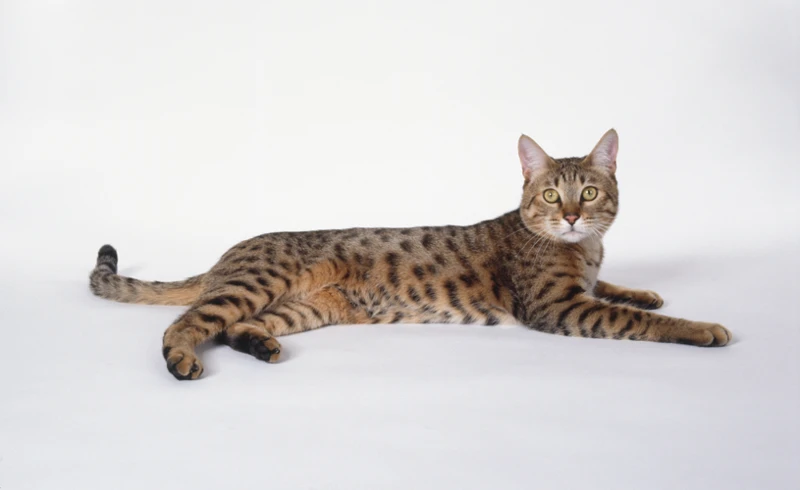
As important as age is when it comes to a California Spangled’s dietary needs, their lifestyle should also be taken into consideration. Every cat is unique and their lifestyle can greatly affect their nutritional requirements. It is essential to provide your furry companion with a balanced diet that caters to their specific lifestyle needs. Let’s take a closer look at some of the lifestyle factors that impact your California Spangled’s nutritional requirements and how to ensure they stay healthy and happy.
Indoor vs. Outdoor
The lifestyle of your California Spangled can have an impact on their nutritional needs. One important factor to consider is whether your cat is living indoors or outdoors. Indoor cats tend to be less active compared to their outdoor counterparts, which means they require fewer calories to maintain a healthy weight. However, they may still need a high-protein diet to build and maintain muscle mass.
When it comes to the diet of outdoor cats, they have higher energy requirements due to their increased daily activities, such as hunting and exploring. They may need more calories and a diet that is rich in fats to fuel their high energy levels. Additionally, outdoor cats may be exposed to environmental factors such as pollutants and toxins, which can affect their overall health and nutrient requirements.
Here are some key nutritional considerations for indoor and outdoor cats:
Indoor Cats:
- Lower calorie intake
- High-protein diet to maintain muscle mass
- Supplements such as taurine to support eye and heart health
- Increased dietary fiber to prevent hairballs
Outdoor Cats:
- Higher calorie intake
- Diet rich in fats to fuel high energy levels
- Supplements such as omega-3 fatty acids to support joint health and mobility
- Increased dietary antioxidants to combat environmental stressors
Regardless of whether your cat is living indoor or outdoor, it is important to consult with your veterinarian to determine the best diet plan that meets their individual nutritional requirements.
Active vs. Sedentary
One important factor that affects a California Spangled’s nutritional requirements is their activity level. Active cats who are constantly running, jumping, and playing burn more calories compared to sedentary cats who tend to be more relaxed and spend most of their time lying down.
To ensure that your California Spangled gets the right amount of nutrition, it is important to take their activity level into account when choosing their diet. Here’s a breakdown of their nutritional needs based on their activity level:
| Active Cats | Sedentary Cats | |
|---|---|---|
| Calories | 320 – 400 kcal/day | 240 – 320 kcal/day |
| Protein | 30% – 35% | 25% – 30% |
| Fat | 20% – 25% | 15% – 20% |
| Carbohydrates | 40% – 45% | 45% – 50% |
Active California Spangled cats require a higher number of calories to sustain their energy levels and should be given a diet that is higher in protein and fat. In contrast, sedentary cats tend to gain weight easily and should eat less fat and carbohydrates to prevent obesity.
It is important to note that a California Spangled cat’s activity level can change over time. For example, a cat that was once active may become more sedentary as they age or experience health issues. Keep an eye on their activity level and adjust their diet accordingly to ensure that they are receiving the right amount of nutrition.
Spayed/Neutered
After spaying or neutering, your California Spangled’s nutritional needs will change, and it’s essential to feed them accordingly. Here are some things to keep in mind:
- Reduced Energy: Spaying or neutering your cat will reduce their energy levels, which means they will not require as many calories as an intact cat of the same age and size. So, it is crucial to adjust their daily food intake accordingly to prevent weight gain and other health issues associated with obesity.
- Increased Appetite: Spaying or neutering your California Spangled could also lead to an increased appetite, which means they may want to eat more food than before. This is because the metabolic rate slows down, which signals the brain to send signals for food intake. You need to be careful about overfeeding your pet.
- Protein Requirements: Spayed or neutered California Spangled cats may have different protein requirements than non-altered cats. In general, altered cats need more protein to maintain lean muscle mass, which is critical for their overall health and wellbeing. You should ensure that the cat food you feed your cat contains sufficient nutrients and protein, which is essential for growth and maintenance.
- Other Nutritional Needs: Aside from protein, altered California Spangled cats might also require a few other specific nutrients. For instance, neutered cats are more prone to urinary tract issues, so consider feeding them specially designed urinary tract care pet foods. These foods contain ingredients that help lessen the likelihood of UTIs developing. You should also ensure that they are receiving enough vitamins and minerals, particularly vitamin D and calcium, to help strengthen their bones.
Keeping your spayed or neutered California Spangled’s nutrition balanced and appropriate will give them the best chance of leading a healthy, happy life. Be sure to consult with your vet if you have any concerns about your cat’s nutritional needs.
Feeding Tips and Recommendations
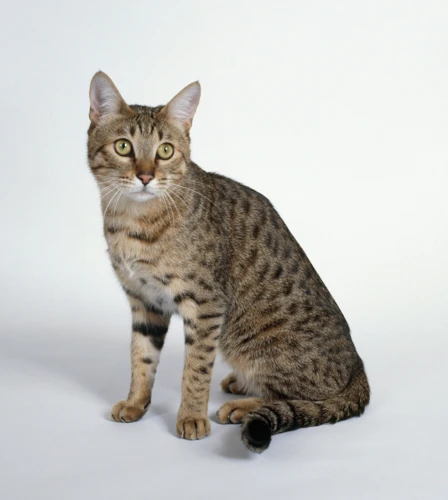
As a California Spangled cat owner, ensuring that your pet gets the right kind of food and portion control is vital. This is especially important considering the breed’s specific nutritional needs based on their age and lifestyle. To help you better understand how to take care of your cat’s dietary requirements, we’ve compiled a list of feeding tips and recommendations that will keep your furry friend healthy and happy. Read on to discover the best practices for feeding your California Spangled cat.
Types of Food
Choosing the right type of food for your California Spangled is essential in providing them with proper nutrition. Here are some options when it comes to feeding your feline friend:
| Types of Food | Description |
|---|---|
| Dry Food | Dry food is an affordable and convenient option. It is easy to store and can be left out for your cat to graze on throughout the day. However, it may not provide as much moisture as other types of food. |
| Wet Food | Wet food is a good option for cats who need more moisture in their diet. It is often more expensive than dry food, but can have more protein and less carbohydrates. It may also be more appealing to picky eaters. |
| Semi-Moist Food | Semi-moist food is a balanced option that is easy to digest and appealing to many cats. However, it can be high in sugar and may not provide enough moisture. |
| Raw Food | Raw food is a controversial option that involves feeding your cat a diet of uncooked meat. It can provide many of the necessary nutrients but can also pose a risk of bacterial infection and parasites. It is important to consult with your vet before starting a raw food diet. |
When choosing food for your cat, look for options that are made with high-quality ingredients and have a balance of protein, fat, and carbohydrates. It is also important to avoid foods that contain fillers, artificial colors, and preservatives. Consult with your vet to determine the best type of food for your cat’s specific needs.
Portion Control
When it comes to feeding your California Spangled, portion control plays a crucial role in maintaining their overall health. Overfeeding your cat can lead to obesity and other health issues. It is important to know how much food your cat needs based on their age, weight, and activity level.
Portion Control Chart
To help you determine the appropriate portion sizes for your California Spangled, refer to the following chart:
| Weight | Amount of Food | Frequency |
|---|---|---|
| 4-6 lbs | ¼ – ½ cup | 2-3 times a day |
| 7-10 lbs | ½ – ¾ cup | 2 times a day |
| 11-14 lbs | ¾ – 1 cup | 2 times a day |
| 15-18 lbs | 1 – 1 ¼ cups | 2 times a day |
Keep in mind that this chart is just a guideline, and you should adjust the portion sizes based on your cat’s specific needs. Factors like age, sex, activity level, and overall health can all influence how much food your cat requires.
Measuring Your Cat’s Food
To ensure that you are providing your California Spangled with the appropriate portion sizes, it’s best to measure their food using a measuring cup or kitchen scale. Free-feeding is not recommended since it can lead to overeating and obesity. Instead, feed your cat two or three times a day based on their specific needs.
Other Factors to Consider
In addition to portion control, there are other factors you should consider when feeding your California Spangled. For example, feeding them a balanced diet that includes all of the essential nutrients they need is important for their overall health. You should also monitor your cat’s weight regularly to ensure that they are maintaining a healthy body condition.
Conclusion
Portion control is an important aspect of feeding your California Spangled. By following the portion control chart and measuring your cat’s food, you can ensure that they are receiving the appropriate amount of food based on their age, weight, and activity level. Remember to also consider other factors like a balanced diet and regular weight monitoring for overall health and wellbeing.
Hydration
Proper hydration is essential for your California Spangled’s overall health and well-being. A lack of water intake can lead to dehydration, which can cause serious health problems, including kidney failure. Here are some tips to ensure your furry friend stays hydrated:
- Provide Access to Clean Water: It’s essential to ensure that your California Spangled has access to fresh and clean water at all times. Keep their water bowl clean and change it frequently to avoid any bacteria buildup that could be harmful to your pet’s health.
- Add Some Flavor: Some cats may be fussy about drinking plain water, so you could add flavor to the water in the form of broth or tuna water. This can encourage your cat to drink more water.
- Use a Water Fountain: Some cats prefer drinking water from a running source, such as a fountain. Installing a water fountain can increase your cat’s water intake and encourage them to drink more.
- Include Wet Food in Their Diet: Wet food contains a higher percentage of water than dry food. Feeding your cat with wet food can help increase their overall water intake and keep them hydrated.
Remember that the amount of water your cat needs depends on their age, size, diet, and activity level. Keep an eye on their water intake and monitor their behavior for signs of dehydration, such as lethargy or sunken eyes. Providing adequate hydration is an essential part of keeping your California Spangled healthy and happy.
Supplements
Supplements are a great way to provide your California Spangled with the necessary nutrients they might be missing out on in their regular diet. Before adding any supplements to your cat’s diet, it’s always recommended to talk to your vet first and get their advice. Here are some common supplements that your California Spangled might benefit from:
| Supplement | Benefits | Recommended Dosage |
|---|---|---|
| Fish Oil | Rich in omega-3 and omega-6 fatty acids, promotes healthy skin and coat, helps with joint health and mobility | 500 mg to 1000 mg per day |
| Probiotics | Improve gut health, promote healthy digestion, boost the immune system, reduce inflammation | Follow package recommendations for dosage |
| Vitamin E | Powerful antioxidant, helps with skin and coat health, promotes a healthy immune system, and supports joint health and mobility | 200 IU per day |
| Taurine | Essential amino acid for cats, important for maintaining healthy eyes, heart, and digestive system | 250 mg per day |
It’s important to keep in mind that supplements should never be used as a replacement for a balanced diet. They are meant to enhance your cat’s diet and provide additional support for their health and wellbeing. Always do your research and talk to your vet before introducing any supplements to your California Spangled’s diet.
Possible Health Problems
As much as we maintain our California Spangled’s nutrition, they are still prone to some health issues that could arise from poor feeding habits. These issues are not ideal for our furry friends, and prompt attention should be given to mitigate their effects. It’s therefore crucial to stay informed on what to watch out for and how to address them as soon as possible. Let’s dive in and explore some possible health problems that your California Spangled might face.
Obesity
Obesity is a major health concern among California Spangled cats. Obesity is generally caused by overfeeding and a lack of exercise, which can lead to serious health problems. A California Spangled cat that is overweight may experience joint problems, heart disease, and even diabetes. It’s essential to keep your California Spangled cat at a healthy weight.
One way to determine if your cat is overweight is by using the body condition scoring system. This system evaluates the cat’s body fat and muscle mass to determine if they are at an ideal weight. A score of 4 or 5 (out of 9) is considered ideal, while a score of 6 or above may indicate that the cat is overweight.
There are several ways to manage your California Spangled cat’s weight. One way is to carefully monitor their food intake and limit the number of treats they receive. Another way is to encourage exercise, such as playing with toys or taking them for walks on a leash.
Table:
| Causes of Obesity | Solutions |
|---|---|
| Overfeeding | Monitor food intake and limit treats |
| Lack of Exercise | Encourage exercise through play and walks |
| Medical Conditions | Consult with a veterinarian |
Sometimes obesity may also be caused by underlying medical conditions, in which case it’s crucial to consult with your veterinarian to determine the appropriate course of action. It’s important to keep your California Spangled cat at a healthy weight to avoid any serious health complications.
Urinary Tract Issues
Urinary tract problems are common in California Spangled cats, especially in males. It is important to understand the nutritional requirements to prevent urinary tract infections and other related issues. Below are some factors that contribute to urinary tract issues in cats:
| Dehydration | Not drinking enough water can lead to concentrated urine and cause crystal formation. |
| Acidic Urine | Excessive acidity in urine can lead to crystal formation and other urinary tract problems. |
| Mineral Content | Excessive mineral content, such as magnesium and phosphorus, can contribute to crystal formation. |
To prevent urinary tract issues, it is important to provide your California Spangled with a diet that helps maintain the urinary tract’s health. Here are some tips:
- Provide fresh water at all times. Encourage your cat to drink more water.
- Feed your cat a diet that is formulated to maintain urinary tract health. Look for cat food brands that have lower mineral content.
- Consider feeding wet food instead of dry food. Wet food has a higher moisture content, which can help prevent urinary tract issues.
- Feed your cat smaller and more frequent meals to promote hydration and prevent the urine from becoming too concentrated.
- Consult with your veterinarian to add appropriate supplements that support urinary tract health.
California Spangled cats may develop urinary tract issues even with adequate nutrition. Symptoms of urinary tract issues include straining during urination, frequent urination, and blood in urine. It is essential to take your cat to a veterinarian for a check-up if you suspect that your cat has a urinary tract problem. With proper nutrition and care, you can help prevent urinary tract issues and keep your California Spangled happy and healthy.
Dental Problems
Maintaining good dental hygiene in your California Spangled cat is crucial to their overall health and well-being. Dental problems can lead to discomfort, pain, and even systemic infections. Some common dental problems that your cat may face include:
- Periodontal disease: This is a bacterial infection that affects the gums and tissues surrounding the teeth. It can lead to bad breath, swollen gums, and even tooth loss.
- Gingivitis: This is an inflammation of the gums that can cause sensitivity and pain. If left untreated, it can lead to periodontal disease.
- Tooth resorption: This is a painful condition in which your cat’s body breaks down and reabsorbs the tooth structure. It can lead to tooth loss and discomfort.
To prevent dental problems, it’s essential to establish good dental habits early on. Brushing your cat’s teeth regularly and providing dental treats and toys can help remove plaque and bacteria from their teeth. You can also consider adding a water additive to their drinking water to help fight bacteria.
If you notice any signs of dental problems in your cat, such as bad breath, swollen gums, or tooth discoloration, it’s essential to schedule a visit with your veterinarian. They may recommend a dental cleaning or other treatment to help prevent further damage.
In addition to preventative measures, diet can also play a role in your cat’s dental health. Feeding your cat a high-quality diet that is free from excessive carbohydrates and sugars can help prevent the buildup of plaque and tartar on their teeth. You can also consider feeding them dental-specific diets that are designed to promote oral health.
By prioritizing your California Spangled’s dental health, you can help prevent painful and potentially serious dental problems from developing. Regular dental care and a healthy diet can go a long way in ensuring your cat’s overall well-being.
Conclusion
In conclusion, understanding the nutritional requirements of your California Spangled cat is crucial to their overall health and wellbeing. Feeding the right types of food in the correct portions, providing ample hydration, and managing supplements can all lead to a healthy and happy feline companion.
It is essential to provide age and lifestyle-appropriate nutrition, whether your cat is a kitten, adult, or senior, and whether they are indoor or outdoor, active or sedentary, or spayed/neutered.
While it may be tempting to overfeed your pet or give them human food as an occasional treat, it is crucial to monitor their diet and avoid common health problems such as obesity, urinary tract issues, and dental problems.
By following the feeding tips and recommendations outlined in this article, you can help your California Spangled live a long and healthy life. Always consult with your veterinarian when in doubt about your cat’s nutritional needs, and remember that a healthy diet is the foundation of a happy and active feline companion.
Frequently Asked Questions
What are the nutritional requirements for a California Spangled cat?
California Spangled cats require a well-balanced diet that includes appropriate amounts of protein, fat, and carbohydrates. The exact nutritional requirements will depend on the cat’s age, weight, and lifestyle.
How often should I feed my California Spangled cat?
Adult cats generally need to eat twice a day, while kittens may need to eat more frequently. Talk to your veterinarian to determine the best feeding schedule for your California Spangled cat.
What types of food should I feed my California Spangled cat?
You can feed your cat a high-quality commercial cat food that is specially formulated for their age and lifestyle. You can also give your cat occasional treats as long as they do not make up a significant portion of their diet.
Do California Spangled cats have any specific dietary restrictions?
Most healthy California Spangled cats do not have any dietary restrictions. However, cats with certain medical conditions may require a specialized diet. Talk to your veterinarian if you have any concerns about your cat’s diet.
Should I give my California Spangled cat supplements?
Most healthy cats do not require supplements if they are eating a well-balanced diet. However, cats with certain health conditions may require specific supplements. Talk to your veterinarian before giving your cat any supplements.
How much water should my California Spangled cat drink?
California Spangled cats should drink plenty of water every day to stay hydrated. You can encourage your cat to drink more water by providing fresh, clean water in a clean bowl. You can also add small amounts of water to your cat’s wet food.
How much food should I give my California Spangled cat?
The amount of food your California Spangled cat needs will depend on their age, weight, and lifestyle. Talk to your veterinarian to determine the appropriate portion size for your cat.
What are the health risks associated with overfeeding my California Spangled cat?
Cats that eat too much may become overweight or obese, which can lead to health problems such as diabetes, joint problems, and heart disease.
What are the signs of malnutrition in a California Spangled cat?
Signs of malnutrition in a cat may include lethargy, weight loss, poor coat quality, and digestive problems. If you suspect that your cat is malnourished, talk to your veterinarian as soon as possible.
How can I tell if my California Spangled cat is getting the nutrition they need?
A healthy California Spangled cat should maintain a healthy weight, have a shiny coat, and generally be full of energy. If you are concerned about your cat’s nutrition, talk to your veterinarian.

